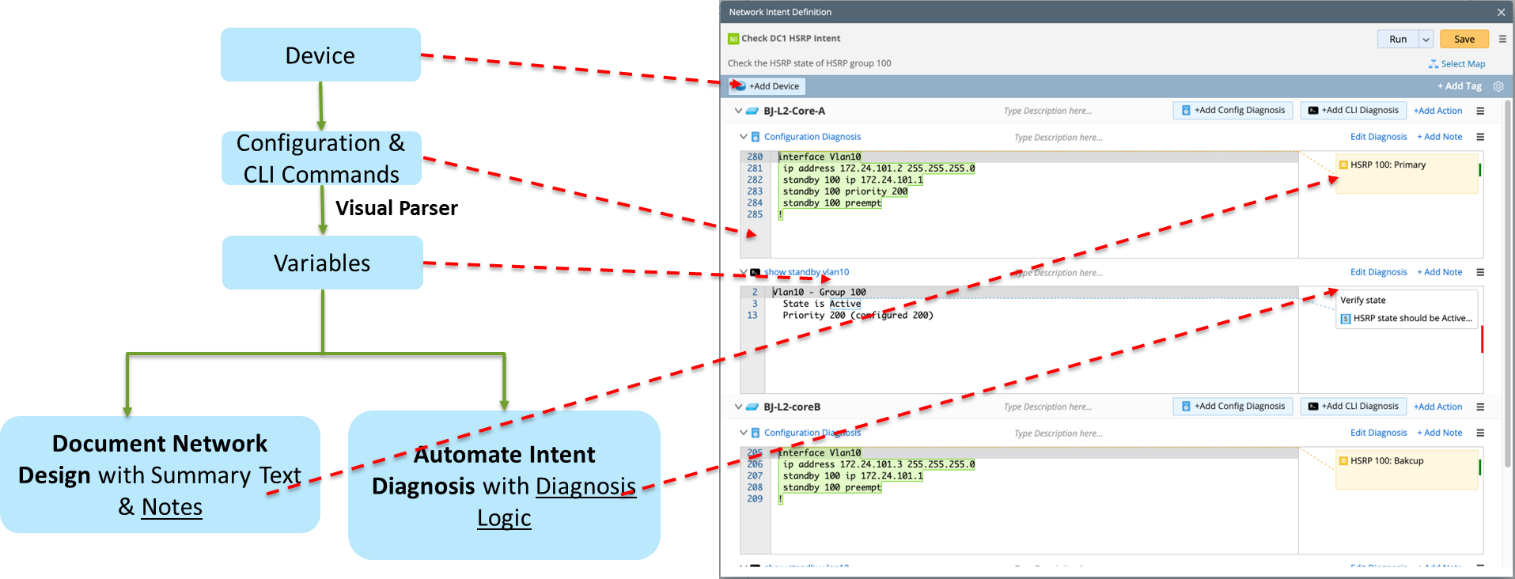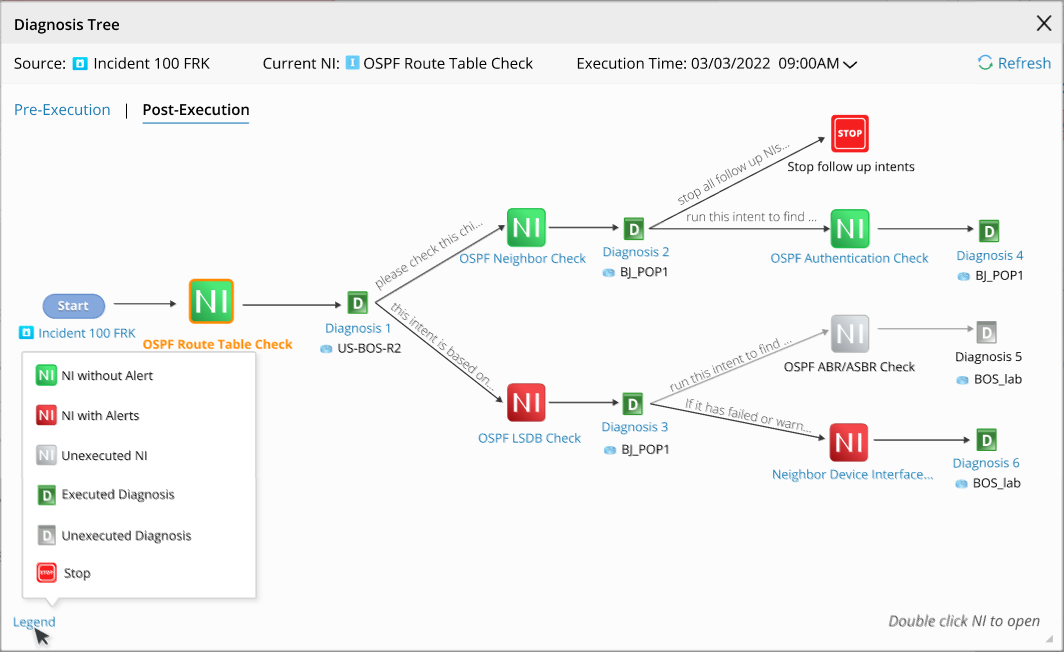Network Intent (NI) and Network Intent Cluster (NIC)
The core automation unit of PDAS is Network Intent (NI), device-specific automation. NI describes a network design for a specific network device, what these design baselines are, and how to verify the design works properly. When a network problem occurs, one or multiple NIs are violated. By analyzing past tickets, users can create NIs to document the problems. The next time a similar situation occurs, users can be instructed to execute these NIs to diagnose the problem automatically. Further, the system can monitor these NIs to prevent these problems.
NI takes the device configurations and CLI commands as the input and leverages Visual Parser, a UI-based no-code parser, to define the variables and the diagnosis logic for these variables.

Multiple NIs can be grouped as a family NI to form a diagnosis flow. Users can define follow-up NIs in the Diagnosis so that these NIs can be executed under certain conditions. For example, users can add Check duplicate router ID and Check EIGRP neighbors as the follow-up NI if the EIGRP routes change.

The execution results of a parent NI and its follow-up NIs are displayed in a diagnosis tree.

Network Intent Cluster (NIC) expands the logic of a NI (seed NI) from one or a set of devices to the whole network. NIC requires no coding skills and has an intuitive user interface for creating and debugging.

The following diagram is a sample NIC to clone a seed NI to check the HSRP running status for a network site. By creating a NIC to achieve this, you can expand the Diagnosis of one Site to your entire network. Each Member NI has its tag and signature variable, the virtual IP address of HSRP.
